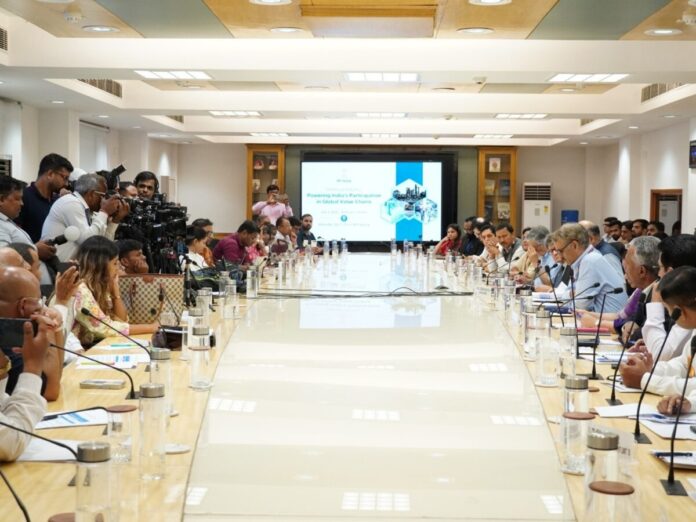NITI Aayog has released a comprehensive roadmap to transform India’s chemical sector into a $1 trillion industry by 2040, up from its current value of approximately $220 billion. The blueprint aims to increase India’s share in the global chemical value chain from 3.5 percent to 12 percent over the next 15 years.
The report titled “Chemical Industry: Powering India’s Participation in Global Value Chains” outlines structural reforms and targeted interventions to address persistent challenges such as import dependency, limited infrastructure, fragmented clusters, and regulatory bottlenecks.
Present Challenges
India’s chemical industry, despite its potential, faces a number of key hurdles:
-
Heavy reliance on imported feedstock and intermediates
-
Inadequate port infrastructure and fragmented industrial clusters
-
Regulatory delays in environmental clearances
-
Low investment in R&D (0.7 percent of revenue, below the global average of 2.3 percent)
-
Shortage of skilled professionals, especially in advanced areas like green chemistry and nanotechnology
Seven-Pillar Strategy
To address these issues and unlock growth, NITI Aayog has proposed a seven-pillar strategy:
-
Creation of World-Class Chemical Hubs
Upgrade existing industrial clusters and develop new ones equipped with shared utilities and logistics infrastructure. A centralised committee and a dedicated chemical fund will oversee implementation. -
Development of Port-Based Clusters
Eight key port clusters have been identified for infrastructure modernisation to support large-scale chemical exports and efficient feedstock imports. -
Introduction of an Opex Subsidy Scheme
Operational expenditure subsidies will be provided to select sectors based on criteria such as import dependence, export potential, and strategic relevance. -
Strengthening R&D and Innovation
Increased funding for research, promotion of academia-industry collaboration, and a focus on advanced technologies in specialty and green chemicals are key priorities. -
Streamlining Environmental Clearances
Establishment of independent audit bodies to accelerate project approvals while ensuring environmental compliance. -
Negotiation of Chemical-Friendly FTAs
India will pursue trade agreements that secure raw material access, reduce tariffs, and promote preferential treatment for exports in key markets. -
Skill and Talent Development
Bridge workforce gaps through expanded vocational training, industry-relevant curricula, and capacity building for faculty and trainers.
Projected Impact
If executed effectively, the plan is expected to:
-
Double production output by 2030
-
Eliminate the trade deficit in chemicals by 2030
-
Create over 700,000 new skilled jobs
-
Generate additional exports worth $35–40 billion by 2030
-
Position India among the top three chemical manufacturing countries globally
Strategic Significance
The roadmap aligns with India’s long-term industrial vision under initiatives like Make in India and Aatmanirbhar Bharat. Reducing dependency on imports, especially from China, and enhancing domestic capabilities will also serve national interests in economic resilience and supply chain security.
With coordinated efforts from central and state governments, industry stakeholders, and research institutions, India’s chemical sector could evolve into a global manufacturing leader. The NITI Aayog roadmap provides a clear policy direction to unlock this potential and drive sustainable industrial growth over the next two decades.



